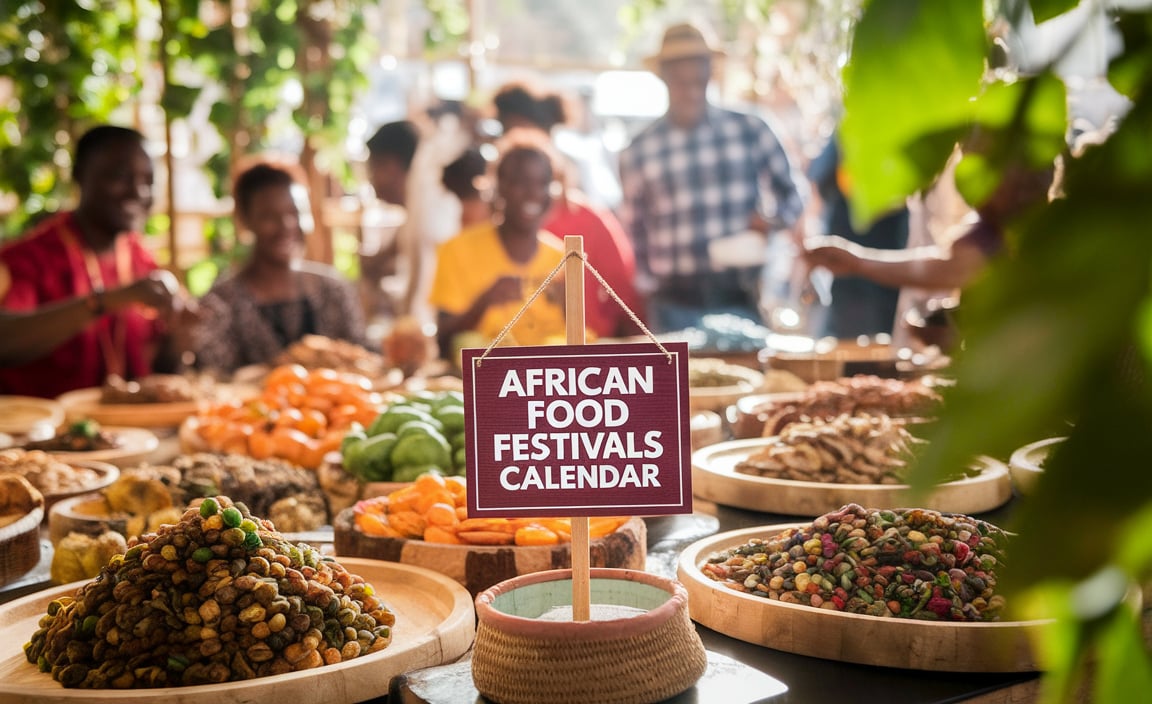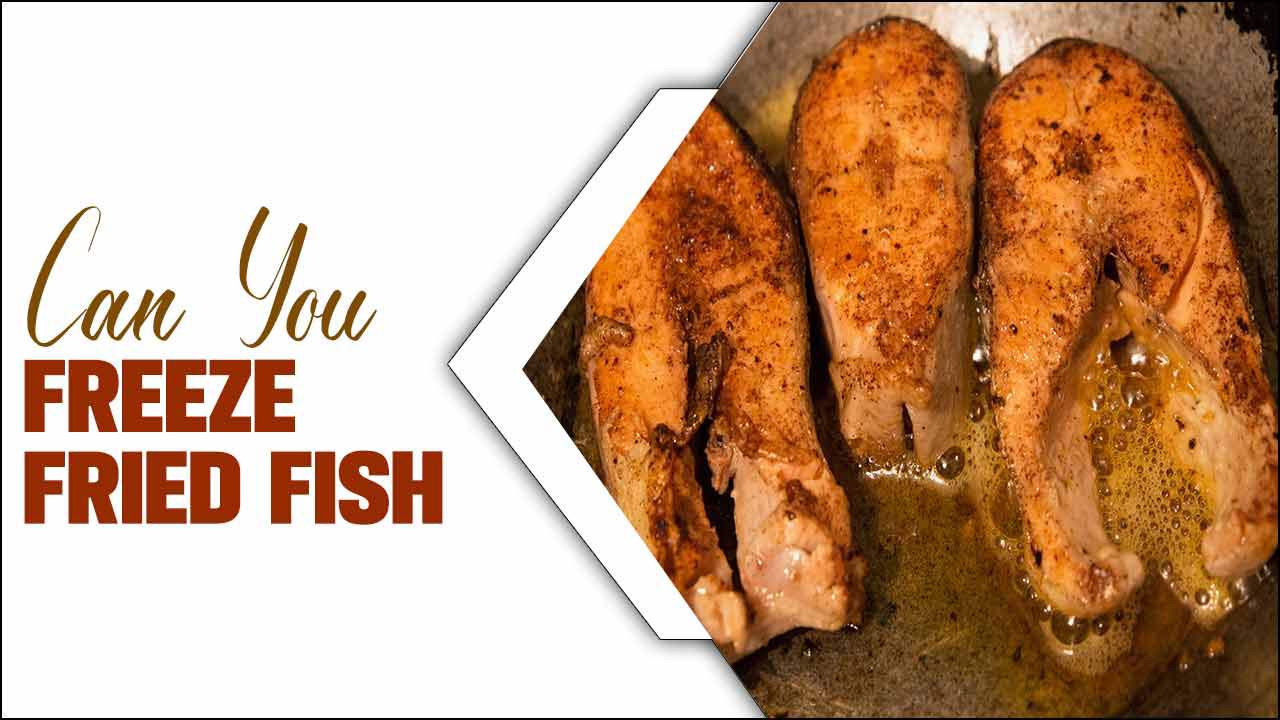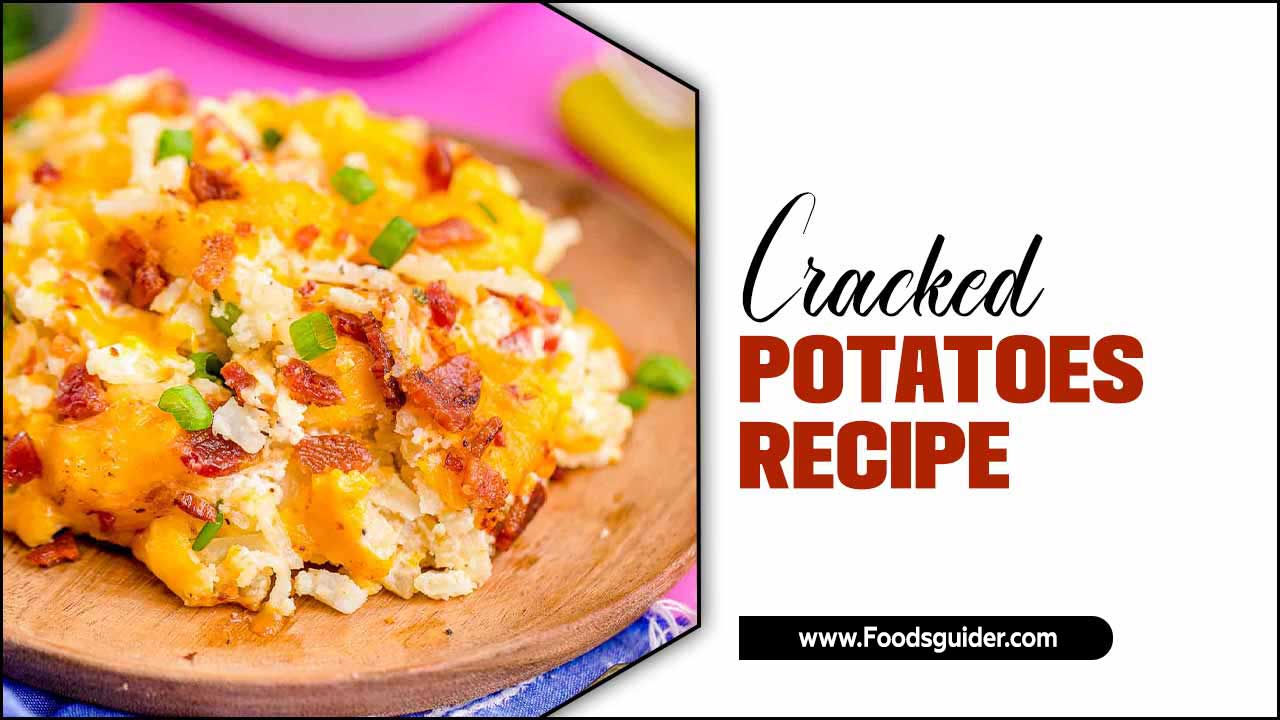Embark on a delicious journey through Thailand’s Isaan region with our guide to essential flavors. Discover how to explore the vibrant street food scene, from iconic som tum to spicy larb, and make the most of your culinary adventure with simple tips for beginners.
Welcome, fellow food explorers! Have you ever dreamed of tasting the authentic, bold flavors of Thailand beyond the usual pad thai and green curry? If you’re eyeing a trip to Thailand and curious about what lies beyond the popular tourist spots, you’re in for a treat. The northeastern region, known as Isaan, is a treasure trove of incredible food that’s often overlooked. It’s incredibly flavorful, wonderfully unique, and might seem a little intimidating to dive into if you’re new to it. But don’t worry! We’re going to break down how to have an amazing Isaan food crawl, making sure you discover the most delicious bites without any fuss. Get ready to excite your taste buds!
Your Beginner’s Guide to an Isaan Food Crawl in Thailand
An Isaan food crawl is an adventure for your senses. It’s about diving headfirst into the vibrant street food culture and regional specialties of northeastern Thailand. Isaan cuisine is famous for its bold, spicy, sour, and savory flavors, often using fresh herbs and fermented ingredients. Unlike the richer curries you might find elsewhere in Thailand, Isaan meals are typically lighter, more pungent, and incredibly satisfying. It’s a culinary experience that’s rich in tradition and bursting with taste.
Why Isaan Food is a Must-Try
Isaan food offers a distinct culinary identity within Thailand. It’s characterized by its liberal use of chilies, lime, fish sauce, and sticky rice, creating a flavor profile that is both intense and refreshing. This region’s food is deeply connected to its agricultural heritage and way of life, with many dishes being simple yet profoundly flavorful.
Bold Flavors: Expect a punch of spice, tang, and umami.
Fresh Ingredients: Lots of herbs, chilies, and vegetables.
Sticky Rice Culture: The staple carbohydrate, perfect for dipping and scooping.
Authentic Experience: It’s a taste of real, everyday Thai life.
Getting Started: Planning Your Isaan Food Crawl
The key to a fantastic food crawl is research and flexibility. You don’t need to be an expert, just open to trying new things!
1. Choose Your Location: While Isaan is a vast region, consider starting in a major city like Udon Thani or Khon Kaen for easier access to diverse food stalls and restaurants. Bangkok also has many Isaan specialty restaurants if you can’t make it to the region itself.
2. Research Key Dishes: Knowing what to look for makes ordering easier. We’ll cover the must-try dishes below!
3. Go Where the Locals Go: Busy stalls with long queues are usually a good sign. Don’t be afraid to point and smile if language is a barrier.
4. Pace Yourself: It’s a crawl, not a race! Enjoy each dish and allow time for digestion.
5. Stay Hydrated: Spicy food can make you thirsty. Water is your best friend!
Essential Isaan Dishes You CAN’T Miss
This is the heart of your food crawl! Get ready to explore these iconic flavors:
1. Som Tum (Papaya Salad)
This is perhaps the most famous Isaan dish, known worldwide. It’s a refreshing, spicy, and tangy salad made from shredded unripe papaya.
Key Ingredients: Green papaya, chilies, garlic, lime juice, fish sauce, palm sugar, tomatoes, peanuts, and sometimes dried shrimp.
Variations:
Som Tum Thai: A slightly sweeter version with less intense spice.
Som Tum Boo Pla Ra: The authentic Isaan style, featuring fermented fish sauce (pla ra) and sometimes salted crab (boo). This has a very distinct, pungent aroma and taste that’s an acquired pleasure for many!
Som Tum Khao Phot: With corn instead of papaya.
2. Larba (Minced Meat Salad)
A flavorful and aromatic salad made from minced meat (usually chicken, pork, beef, or duck) mixed with toasted rice powder, fish sauce, lime juice, chili flakes, and fresh herbs like mint and coriander.
Key Ingredients: Minced meat, toasted rice powder (khao khua), chilies, lime juice, fish sauce, mint, cilantro, shallots.
Why it’s special: The toasted rice powder gives it a lovely nutty texture and aroma. It’s a powerhouse of flavor.
3. Gai Yang (Grilled Chicken)
Marinated whole chicken or chicken pieces grilled over charcoal. It’s incredibly tender, juicy, and flavorful from the marinade.
Marinade typically includes: Lemongrass, garlic, cilantro roots, turmeric, soy sauce, fish sauce, and sometimes coconut milk.
How to enjoy: Usually served with sticky rice and a dipping sauce.
4. Moo Ping (Grilled Pork Skewers)
Sweet and savory marinated pork skewers, grilled to perfection. These are a popular street food snack and appetizer.
Marinade varies but often includes: Coconut milk, fish sauce, soy sauce, palm sugar, garlic, and sometimes fatty pork cuts for extra tenderness.
Tip: Look for skewers that are slightly caramelized and juicy.
5. Nam Tok (Spicy Grilled Meat Salad)
Similar to Larb, but made with grilled meat sliced before being tossed with the dressing. It often uses more flavorful cuts of meat.
Common meats: Beef (Nam Tok Moo) or Pork (Nam Tok Moo).
Flavor profile: Grilled smoky notes combined with the classic Isaan spicy, sour, and savory dressing.
6. Pla Pao (Grilled Fish)
Whole fish, typically tilapia or snakehead fish, stuffed with herbs (like lemongrass and pandan leaves) and coated in a salt crust before being grilled.
How it’s served: The salt crust is removed, leaving succulent, herb-infused fish. It’s often eaten with a spicy dipping sauce.
7. Khao Niao (Sticky Rice)
This is the absolute staple carbohydrate of Isaan. It’s steamed glutinous rice, served in small baskets or wrapped in banana leaves. It has a chewy, slightly sweet texture and is perfect for scooping up sauces and salads.
How to eat it: Tear off a small piece with your fingers, roll it into a ball, and use it to scoop up your food.
Building Your Isaan Food Crawl Experience
Let’s get practical about how to actually do this!
Step-by-Step Food Crawl Plan:
1. Morning Exploration (Light Start): Begin your day with a light but flavorful soup or a simple noodle dish. Or, if you’re feeling it, head straight for a breakfast staple.
Try: A simple noodle soup (Kuay Tiew) or a light rice porridge (Joke).
2. Midday Bites (Savory Delights): This is prime time for some of the iconic dishes.
Must-Haves: Find a Som Tum stall and try a variation. Pair it with Gai Yang and Khao Niao.
3. Afternoon Pick-Me-Up (Snacks & Refreshments): As the heat builds, look for lighter options or popular snacks.
Snack on: Moo Ping skewers from a street vendor.
Refresh with: Fresh fruit juices or a Thai iced tea.
4. Early Evening Feast (Hearty Flavors): As dusk settles, the food scene really comes alive. Seek out heartier salads and grilled items.
Next up: Try Larb or Nam Tok.
Consider: Pla Pao if you’re with a group.
5. Sweet Endings (Dessert): While not as central as in some other cuisines, Thai desserts are a lovely way to finish.
Look for: Mango sticky rice (Khao Niao Mamuang) when in season, or other local sweets offered at dessert stalls.
Tools and Techniques for an Authentic Experience
You don’t need special equipment, but knowing a bit about how things are prepared can enhance your appreciation.
Mortar and Pestle (Krok and Saak): Essential for pounding ingredients for Som Tum and Larb, releasing their maximum flavor.
Charcoal Grill (Krang Moo): The traditional method for grilling Gai Yang, Moo Ping, and Pla Pao, imparting a smoky aroma.
Wok (Ka Ta): Used for stir-frying, though less central to Isaan cuisine than in central Thailand.
Banana Leaf / Bamboo: Used for wrapping sticky rice and as natural serving plates.
Navigating the Stalls: Tips for Beginners
Use Your Senses: Look for busy stalls, fresh ingredients, and cleanliness.
Point and Smile: Don’t let language be a barrier. Pointing at what you want and using polite gestures works wonders.
Specify Spice Level: If you’re not a fan of extreme heat, try saying “Mai Phet” (not spicy) or “Phet Nit Noi” (a little spicy). You can always add more chili later.
Embrace the Communal Tables: Food stalls often have shared seating. It’s a great way to experience the local atmosphere.
Carry Small Bills: Most street vendors prefer cash, and small denominations are easiest for transactions.
Cultural Etiquette and Food Safety
Being mindful of local customs and basic food safety ensures a pleasant experience.
Table: Isaan Food Etiquette & Safety Tips
| Aspect | Advice | Why it Matters |
| :—————- | :—————————————————————————————————- | :————————————————————————— |
| Eating Sticky Rice | Traditionally eaten with fingers. Roll a small portion into a ball to scoop up other dishes. | It’s the customary and most effective way to enjoy sticky rice. |
| Sharing Dishes | Isaan meals are often communal. Order a variety for the table to share. | Encourages variety and a shared dining experience. |
| Pointing | Point with your finger to indicate what you want. | A common and easily understood communication method. |
| Hygiene | Choose stalls that look clean, with well-organized ingredients and good practices (e.g., hand washing). | Minimizes the risk of foodborne illness. |
| Water | Always drink bottled water or water from reputable establishments. | Tap water is generally not safe for tourists to drink. |
| Utensils | Most stalls provide spoons and forks. Some may offer chopsticks for noodles. | Standard practice, though fingers are used for sticky rice. |
| Respect | Be patient and respectful to vendors. A smile goes a long way. | Promotes positive interactions and a better overall experience. |
Beyond the Plate: Pairing Your Isaan Food
What do you drink with these amazing flavors?
Beer: Thai beers like Singha or Chang are popular choices, their crispness cutting through the spice.
Water: Essential for cooling down.
Local Teas: Lemongrass or Thai iced tea can be refreshing.
Sake/Shochu: While not traditional Thai, these are common in some establishments serving Isaan food.
Exploring Beyond the Mains: Isaan Snacks and Sides
Don’t forget about the delicious accompaniments!
Kanom Krok: Sweet coconut pancakes cooked in a special pan, resulting in a delightful crispy exterior and creamy interior. Often served warm.
Sai Krok Isaan: Fermented pork sausages, grilled and served with ginger, chilies, and cabbage. They have a unique sour and savory taste.
Fresh Vegetables: Often served alongside spicy dishes like Som Tum and Larb include cabbage, long beans, and cucumber.
Getting to Isaan (or Finding It Elsewhere)
If you’re planning a true culinary pilgrimage to the region, here’s how to approach it:
Major Isaan Cities to Consider:
Udon Thani: A bustling hub with excellent food markets and easy access to surrounding areas.
Khon Kaen: Known for its universities and vibrant student population, meaning lots of affordable and delicious street food.
Nakhon Ratchasima (Khorat): The largest city in Isaan, offering a diverse range of culinary experiences.
Ubon Ratchathani: Famous for its temples and proximity to national parks, also boasting great food scene.
Finding Isaan Food Outside Isaan:
Even if you’re not traveling to the Northeast, you can still enjoy these flavors. Many Thai restaurants in Bangkok and even international cities specialize in Isaan cuisine. Look for restaurants that explicitly mention “Isaan Food” or have dishes like Som Tum, Larb, and Gai Yang on their menu. For instance, in Bangkok, the areas around Victory Monument and smaller dedicated Isaan eateries are great places to start. You can also find many resources online, such as food blogs and Thai cooking websites, that detail how to make these dishes at home. For those interested in sourcing authentic ingredients outside of Thailand, reputable Asian grocery stores often carry items like fish sauce, palm sugar, and sometimes even fermented fish sauce (pla ra). Local Thai communities are also excellent resources for finding authentic restaurants.
Frequently Asked Questions About Isaan Food
Q1: What is the most important thing to know about Isaan food for a beginner?
A1: The most important thing is that Isaan food is known for its bold, spicy, sour, and savory flavors, often using lots of chili, lime, and fish sauce. Don’t be afraid to ask for less spice if you’re sensitive to heat!
Q2: Is Isaan food very spicy?
A2: It can be! Many dishes feature fresh chilies and chili flakes. However, most vendors are happy to adjust the spice level if you ask. Saying “mai phet” (not spicy) or “phet nit noi” (a little spicy) will help.
Q3: What is “sticky rice” and how do I eat it?
A3: Sticky rice (Khao Niao) is a type of glutinous rice that is chewy and slightly sweet. It’s the staple carb in Isaan. Traditionally, you tear off a small piece with your fingers, roll it into a ball, and use it to scoop up other dishes.
Q4: What are “pla ra” and are they essential for authentic Isaan food?
A4: Pla ra is a fermented fish sauce, with a strong, pungent aroma and unique salty-sour taste. It’s a key ingredient in authentic Isaan dishes like Som Tum Boo Pla Ra. While it’s essential for the most traditional flavor, you can enjoy many delicious Isaan dishes without it if the smell or taste is too intense for you.
Q5: How can I find good Isaan food stalls if I don’t speak Thai?
A5: Look for stalls that are busy with local customers, as this is usually a sign of good quality and taste. Don’t hesitate to point at the dishes you want. A friendly smile and basic gestures go a long way!
Q6: Is it safe to eat street food in Thailand, especially during a food crawl?
A6: Generally, yes, if you are careful. Look for stalls that appear clean, where food is cooked fresh in front of you, and where ingredients look fresh. bottled water is always recommended for drinking. You can learn more about food safety from organizations like the World Health Organization.
Q7: What’s the difference between Larb and Nam Tok?
A7: Both are delicious minced meat or sliced meat salads with similar flavor profiles. Larb is typically made with finely minced raw or cooked meat, while Nam Tok uses grilled meat that is sliced before being mixed with the dressing. Nam Tok also often has a more prominent grilled flavor.
Conclusion: Your Isaan Culinary Adventure Awaits!
Embarking on an Isaan food crawl is an incredible way to experience the authentic heart of Thai cuisine. From the zesty kick of Som Tum to the smoky perfection of Gai Yang, each dish tells a story of tradition, fresh ingredients, and the vibrant spirit of northeastern Thailand. Don’t be shy – dive in, try new things, and savor every bite. Whether you’re exploring the region itself or seeking out Isaan specialties at home or in your local city, this culinary journey is sure to leave you with satisfied taste buds and a deeper appreciation for Thailand’s diverse flavors. Happy eating, and may your food adventures be delicious!







